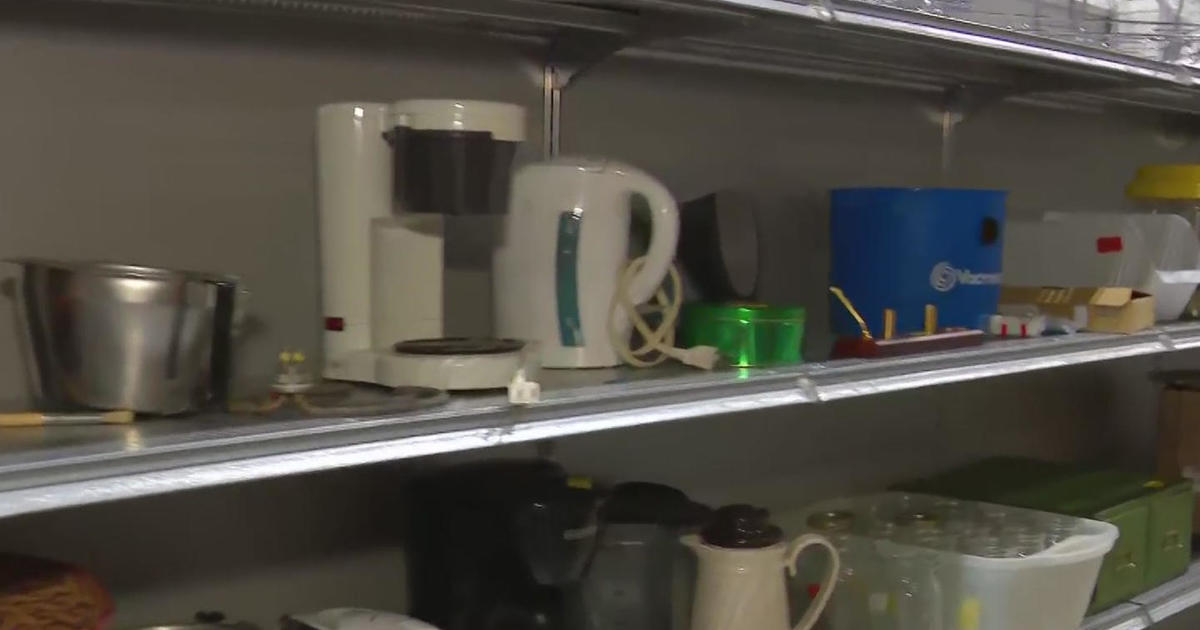DNR Recommends Asian Carp Barrier At Minneapolis
MINNEAPOLIS (AP) — A barrier using sound, bubbles and flashing lights is the most viable option for deterring Asian carp from moving up the Mississippi River from downtown Minneapolis into other Minnesota streams and lakes, according to a state-commissioned engineering report released Thursday.
The estimated construction cost of the barrier at Lock and Dam No. 1 is $12 million, though it could go as high as $19 million because of several uncertainties, and it would cost up to $250,000 a year to operate and maintain, the report said.
Some Asian carp already have been caught in Minnesota's stretch of the Mississippi. There's no evidence the invasive fish have established a permanent breeding population as far upstream as Minneapolis. But Steve Hirsch of the Department of Natural Resources told reporters the fear is that the voracious eaters eventually will, then get past a dam upstream at Coon Rapids and reach other waters including Mille Lacs Lake — one of the state's most popular fisheries.
Asian carp have had devastating effects on game fish and other aquatic life farther downstream in the Mississippi River watershed after escaping from southern fish farms decades ago. Their numbers have tended to stay low until their populations explode, said Hirsch, director of the DNR's Ecological and Waters Resources Division.
"When that's going to happen here — if it's going to happen here — nobody knows to answer to that. ... The prudent approach is we can't assume we have the luxury of time," Hirsch said.
There also are fears Asian carp could wreak the same kind of havoc on Great Lakes fish. Last month a federal judge threw out a lawsuit by five states including Minnesota that want barriers built in Chicago-area waterways to keep the fish out of Lake Michigan.
The DNR hired Barr Engineering Co. to evaluate options for barriers that could be placed at the St. Anthony Falls lock and dam to prevent them from getting past Minneapolis. The lock and dam is seen as one of the best sites for choking off the Asian carp advance because it wouldn't require building a barrier across the entire river. The proposed curtain would be about 200 feet long.
The study determined an electric barrier would be most effective, but said it's not feasible at Minneapolis because it would pose significant public safety risks and cause corrosion of the metal parts of the lock, which is owned and run by the U.S. Army Corps of Engineers.
"The closing of the lock and dam, at least in DNR's opinion, would still be the best solution," Hirsch said, but he added that shutting it down would require an act of Congress.
Therefore, the DNR recommended the state proceed with design and construction work on the sound-bubble-and-light barrier. Hirsch said the barrier would have to be considered experimental because the technology never has been tested in an environment like a lock chamber.
Electrical barriers can be up to 99 percent effective and research indicates the proposed barrier should work nearly as well, said Jeff Lee, senior ecologist with Barr Engineering.
The Legislature already has approved spending $7.5 million from the state's Outdoor Heritage Fund for Asian carp barriers, including $5.6 million for design and construction work at Lock and Dam No. 1. The DNR said it expects design work will cost about $1 million, leaving $4.5 million for construction. That means the Legislature would have to find another $8 million to $15 million to build and operate the barrier, Hirsch said.
If the Legislature approves the money and the Army Corps grants the necessary permits in time, Hirsch said, construction could begin in November after the shipping season closes with a target date for completion of March 2014.
(© Copyright 2012 The Associated Press. All Rights Reserved. This material may not be published, broadcast, rewritten or redistributed.)



